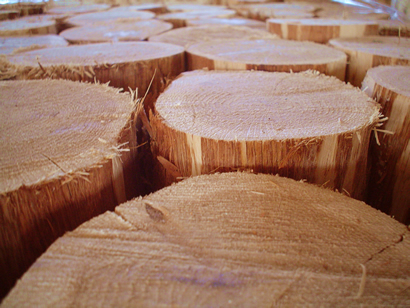By Tobin Dimmitt

Lumber generally falls under one of two different categories: hardwood and softwood. Based solely on their appearance, it’s oftentimes difficult — if not impossible — to tell the difference between the two. However, there are subtle differences between hardwood and softwood that shouldn’t go unnoticed, especially if you are in the market for new furniture. Here, we’re going to break down each of these wood types, revealing their unique properties and characteristics.
Hardwood Is Not Necessarily Harder…
It’s a common assumption that hardwood is stronger and more durable than softwood. After all, the name alone would leave you to believe this is the case. The truth, however, is that some of the lightest and weakest types of wood are considered ‘hardwood,’ while some of the strongest woods are considered ‘softwood.’ Balsa wood, for instance, is technically a hardwood, even though it’s incredibly weak and flimsy.
So, What’s The Difference?
The difference between hardwood and softwood is the group of trees it refers to. Softwoods refers to the group of gymnosperm trees, while hardwood refers to the group of angiosperm trees. Now you are probably wondering what significance this plays in the role of lumber. Well, hardwoods (AKA angiosperm trees) produce their seeds with some form of protective covering, such as fruit or nuts. On the other hand, softwoods (AKA gymnosperm trees) simply drop their seeds to the ground without any protective covering.
Due to their protective coating, angiosperm trees are capable of enduring cold winter weather better than their counterpart. This is a huge advantage that ultimately results in a greater amount of hardwoods in regions far north or south from the equator.
Should I Purchase Softwood or Hardwood Furniture
The truth is that most furniture constructed with wooden materials is considered hardwood, even when it was technically made with softwood materials. With that said, some manufacturers correctly label their furniture as softwood or hardwood. Do your homework before purchasing any new piece of furniture to determine the exact type of wood it’s made of.
Technically speaking, true hardwood material is denser than softwood. This increased density will help to protect the furniture from humidity and moisture damage, while giving it a ‘sturdier’ feel. Another key benefit of hardwoods is their ability to resist decay more easily than softwoods. Prolonged exposure to moisture will inevitably result in rotting, but hardwoods are capable of lasting for a longer period of time without suffering from decay.
